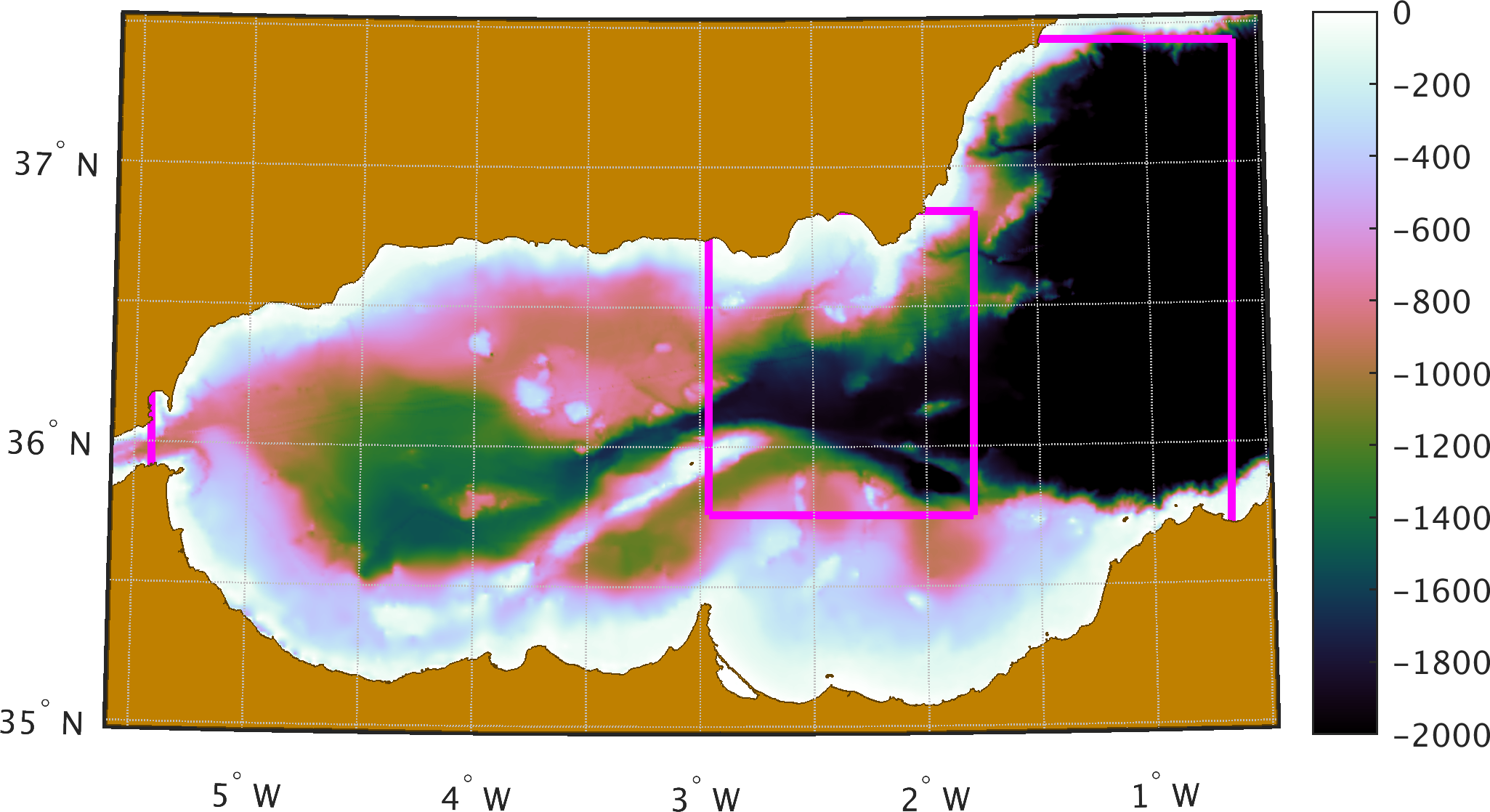Surface Dynamic Uncertainty Characterization and Transfer (S-DUCT)
|
P.F.J. Lermusiaux, P.J. Haley, Jr., C. Mirabito, W. Ali Massachusetts Institute of Technology
|
P. Abbot, C. Emerson OASIS, Inc. C.-S. Chiu Naval Postgraduate School |
Project Summary Ongoing MIT-MSEAS Research S-DUCT-supported publications Background Information
|

|

|
| This research is sponsored by NAVAIR. | ||||
Project Summary
The long-term MIT-MSEAS goals of the two phases of the S-DUCT effort are to:
- Employ and develop our high-resolution MSEAS modeling system in ocean regimes with surface ducts to provide high-fidelity non-hydrostatic/hydrostatic sound speed fields for acoustic studies
- Develop and utilize our coupled oceanographic-acoustic probabilistic modeling based on rigorous Dynamically-Orthogonal (DO) differential equations for the stochastic characterization of surface ducts
- Employ and advance our coupled Bayesian data assimilation (GMM-DO filter and smoother) for the joint dynamic ocean-physics-acoustics inversion and next-generation tomography
- Apply our theory and schemes based on Bayesian mutual information fields to predict the placement of assets that maximize information and optimize the probability of detection
- Quantify the sound speed and transmission loss variability in surface duct regions (e.g. mixed-layer depth variations, internal wave effects scattering acoustic energy out of the surface duct, etc.) and investigate models of such effects that are useful for naval applications.
This project is in collaboration with OASIS, Inc..
Background information is available below.
| Top of page |
Ongoing MIT-MSEAS Research
2018 Phase I and 2019 Phase I Option Work
Modeling products and data sources can be found on the 2018 Phase I and 2019 Phase I Option work page.
Phase II Work
Modeling products and data sources can be found on the Phase II work page.
Presentations and Meetings
| Top of page |
Background Information
For this “Surface Dynamic Uncertainty Characterization and Transfer (S-DUCT)” effort, we will utilize our MIT Multidisciplinary Simulation, Estimation, and Assimilation System (MSEAS) (Haley and Lermusiaux, 2010; Haley et al., 2015; http://mseas.mit.edu/software). The MSEAS software (MSEAS-web, 2009) is used for fundamental research and for realistic simulations and predictions in varied regions of the world's ocean (Leslie et al, 2008; Onken et al, 2008; Haley et al, 2009; Gangopadhyay et al, 2011; Ramp et al, 2011; Lermusiaux et al., 2011, 2017a,b). Applications include monitoring (Lermusiaux et al, 2007), ecosystem prediction and environmental management (Besiktepe et al, 2003; Cossarini et al, 2009) and, importantly for the present project, real-time oceanographic-acoustic predictions and coupled oceanacoustic data assimilation (e.g. Lermusiaux et al., 2002; Robinson and Lermusiaux, 2004; Xu et al, 2008; Lam et al, 2009; Duda et al, 2011; Colin et al, 2013).
| Top of page |


